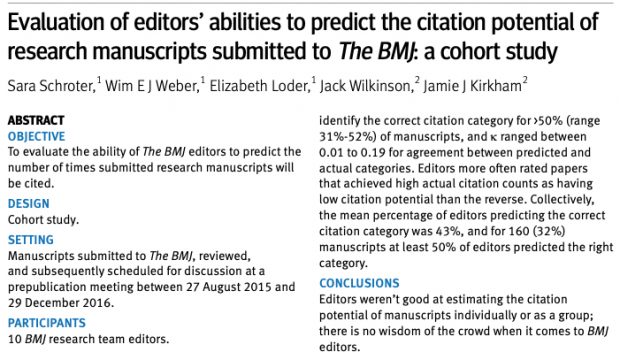It is not a joke – it is the harsh reality – kudos to the BMJ for allowing this analysis.

It is not a joke – it is the harsh reality – kudos to the BMJ for allowing this analysis.

I have seen the first user looking here for the BMJ Christmas edition already 2 weeks ago — clearly the annual highlight in the biomedical world since 2000. But only today, the 2007 issue is being online. As a former recumbent owner, I can assure you that Professor Shuster’s observation is correct. Even with my folding bike in the Munich S-Bahn I get many responses from the public, usually technical questions by men but also price inquiries by women. Continue reading Punch line
Can you find the problem in the following abstract
…We report a case-control study of 6,106 individuals from the UK, Vietnam and several African countries with invasive pneumococcal disease, bacteremia, malaria and tuberculosis. We genotyped 33 SNPs, including rs8177374, which encodes a leucine substitution at Ser180 of Mal. We found that heterozygous carriage of this variant associated independently with all four infectious diseases in the different study populations. Combining the study groups, we found substantial support for a protective effect of S180L heterozygosity against these infectious diseases (N = 6,106; overall P = 9.6 times 10-8)…
The BMJ explained last year – why p-values (or relative risks alone) do not make so much sense
Unless ratio measures are reported with the underlying absolute risks, readers cannot judge the clinical significance of the effect. Consider the following example. Readers may be told that the relative risk of death with drug A compared with placebo is 0.5; in other words, people who take drug A are half as likely to die as people who take placebo. But without the underlying absolute risks—the chance of death in each group—the information is incomplete.1 A relative risk of 0.5, for example, is compatible with a wide range of changes in the risk of death: from 20% to 10%, from 1% to 0.5%, and from 0.0004% to 0.0002%.
Googling for a diagnosis? The results are not too bad if you believe in a new BMJ report. The authors measured the percentage of correct diagnoses from Google searches compared with the correct diagnoses of 26 cases published in the New England Journal of Medicine. Google searches revealed the correct diagnosis in 15 (58%) cases.
Continue reading Dr. Google